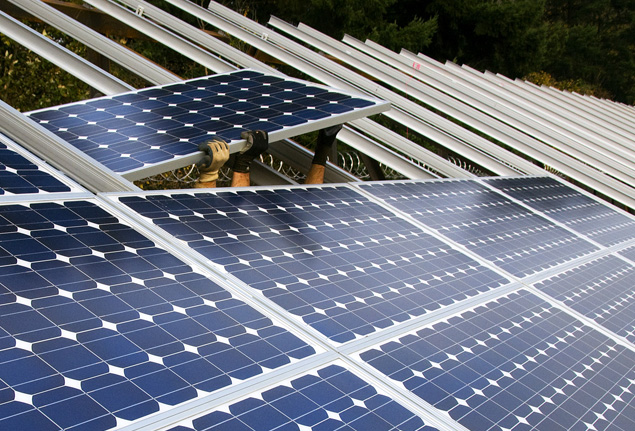Private Players to Fund $1B Solar-Energy Initiative for Military Housing
SolarCity and Bank of America Merrill Lynch have agreed on financing terms for SolarStrong, SolarCity's plan to build more than $1 billion in solar power projects for privatized U.S. military housing communities across the country over the next five years.
December 1, 2011
By Scott Baltic, Contributing Editor
SolarCity, of San Mateo, Calif., and Bank of America Merrill Lynch have agreed on financing terms for SolarStrong, SolarCity’s plan to build more than $1 billion in solar power projects for privatized U.S. military housing communities across the country over the next five years, the companies announced Wednesday. SolarCity will partner with leading privatized military housing developer/managers to install, own and operate rooftop solar installations and provide affordable solar electricity.
SolarCity said SolarStrong is expected to be largest residential solar photovoltaic project in U.S. history. The initiative could ultimately create up to 300 megawatts of solar generation capacity that could provide power to as many as 120,000 military housing units.
BofA Merrill will be providing up to $350 million in debt financing to the initiative over its five years, an individual close to the transaction told Commercial Property Executive. SolarCity declined to discuss the equity-financing portion of the project.
Both companies, however, noted that although the project initially was believed to depend on a federal loan guarantee, in the end the current participants found a way to make it work without the guarantee.
SolarCity and private equity firm U.S. Renewables Group began the loan guarantee application process under the U.S. Department of Energy’s Section 1705 loan guarantee program in October 2010. BofA Merrill subsequently joined the application as lender.
Although DoE announced a conditional commitment of a partial loan guarantee for SolarStrong this past September, the parties were unable to finalize the loan before the Sept. 30 program deadline. Along the way, however, BofA Merrill became convinced of the program’s viability and continued to support SolarStrong without the loan guarantee.
“This project demonstrates the long term viability of large-scale, distributed solar generation,” said Jonathan Plowe, head of New Energy and Infrastructure Solutions at BofA Merrill.
In an exclusive interview with CPE, SolarCity vice president of development Aaron Gillmore noted that the U.S. military services have been pushing to lower their carbon footprints. (The Defense Department is the single-largest energy consumer in the United States.) “The services are aware of [SolarStrong] and are completely supportive of it,” he said.
A recent SolarCity project at Davis-Monthan Air Force Base, Ariz., Gillmore said, is similar in some ways to the types of projects that will be undertaken within SolarStrong.
At Davis-Monthan, SolarCity installed photovoltaic roof-mounted units on the majority of 929 privatized residential units on the base, building 2.7 MW of generating capacity. A 3.3 MW photovoltaic ground array was built nearby, and the two components handle about three-quarters of the housing development’s electrical needs.
SolarCity’s customer at Davis-Monthan is Lend Lease Investment Management, one of the U.S. affiliates of Sydney, Australia–based Lend Lease Group. The U.S. arm holds the largest share of privatized U.S. military housing.
Gillmore emphasized that the Davis-Monthan project worked financially because of an incentive program offered by Tucson Electric Power, the local utility. Individual SolarStrong projects won’t necessarily have subsidies other than the standard federal ones.
That’s why the just-announced funding structure is important, Gillmore said, by enabling the solar power industry to move to a debt-financing model. “This is a huge step forward in the financing of distributed generation.”








You must be logged in to post a comment.